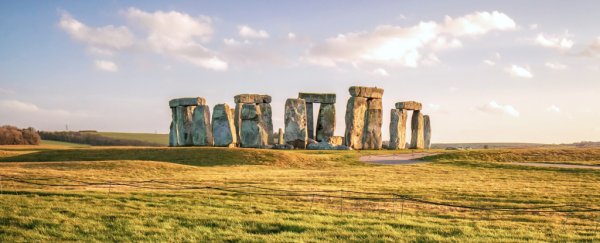Around 2500 BCE, on one of our planet's many isles, some Neolithic people were undertaking an incredible feat - huge bluestones were being dragged across the British countryside to be placed in a giant circle.
Despite the grandness and scope of this task, nearly 5,000 years and hundreds of studies later, we still aren't sure how and why the people of the Neolithic British Isles built the structure we now call Stonehenge.
Fat residues on shards of pottery found at Durrington Walls, a site nearby, have previously been attributed by scientists to be the result of massive feasting – after all, it takes a lot to feed the hundreds of people required to build such a monument.
But a new study written by Lisa-Marie Shillito, an archaeologist at Newcastle University in the UK, takes a second look at the residue, suggesting it might have been used for another purpose – grease.
"I was interested in the exceptional level of preservation and high quantities of lipids - or fatty residues - we recovered from the pottery," explains Shillito.
"I wanted to know more about why we see these high quantities of pig fat in pottery, when the animal bones that have been excavated at the site show that many of the pigs were 'spit roasted' rather than chopped up as you would expect if they were being cooked in the pots."
This difference is actually quite startling. The study explains that the average amount of lipids in the Durrington Walls pottery was nearly seven times higher than the average archaeological pottery shard.
But were the people actually eating all that fat?
"Lipid residues identified in Grooved Ware pottery from Durrington Walls have been interpreted as evidence for large-scale feasting associated with the construction of Stonehenge," Shillito writes in her paper.
"An alternative interpretation not previously considered is that these residues may be related to a non-food use of animal resources, such as in the production of tallow. Such an interpretation would support the 'greased sled' theory for the transport of the megaliths for Stonehenge."
When you have stones that weigh up to 2 tonnes on average and you don't live in the industrial age, it's going to take some ingenuity to transport the rocks from their original location in Wales all the way to Wiltshire.
Although there are competing theories on whether the stones were already much closer when the Neolithic people stumbled across them, they still would have had to move the megaliths to the location of Stonehenge. Perhaps some grease would have helped.
There are many competing hypotheses over megalith transport, but the 'sled' theory Shillito mentions was given a bit of credence back in 2016, when some researchers tried to move stones of a similar size around a park in London.
They used a wooden sled, logs, and ropes to haul a concrete block around Gordon Square Park – showing that this technique could have been used to move the Stonehenge bluestones to their final resting place in Wiltshire.
Shillito thinks that the high amount of lipids on the pottery might mean that the lard was being used to help grease this process, but cautions that this doesn't mean that people weren't also eating the pigs.
"The production of tallow for lubrication need not exclude feasting on pigs and, indeed, might form part of the same picture - a multi-function product and a multi-purpose activity, comprising both food and non-food uses," she writes.
"Whether or not this hypothesis is correct, it highlights that the value of recognising material culture - including that typically assumed to be 'food' vessels - may have had multiple functions and meanings."
This debate is far from settled at this stage; we're sure there will be plenty more studies arguing about the intricacies of how Stonehenge was built. But for now, it seems the humble pig certainly played its role, too.
The research was published in Antiquity.
